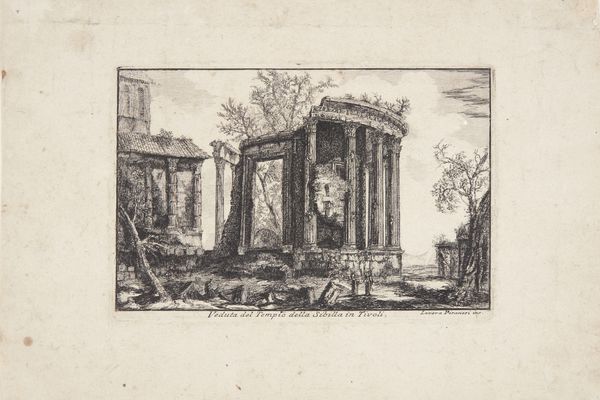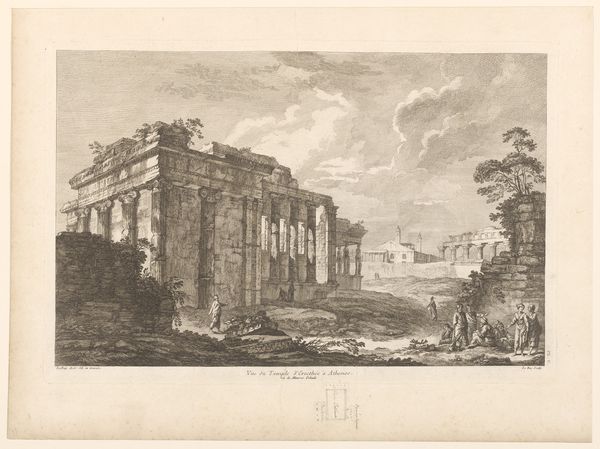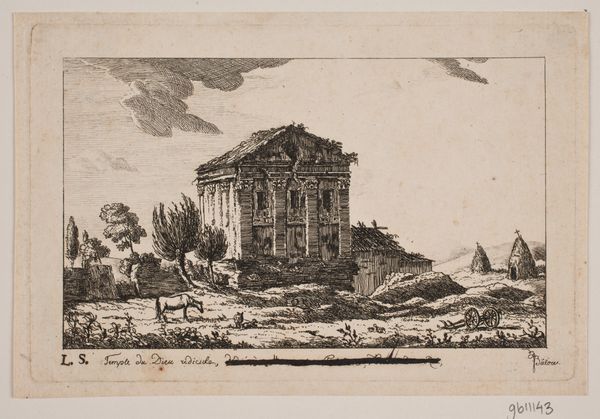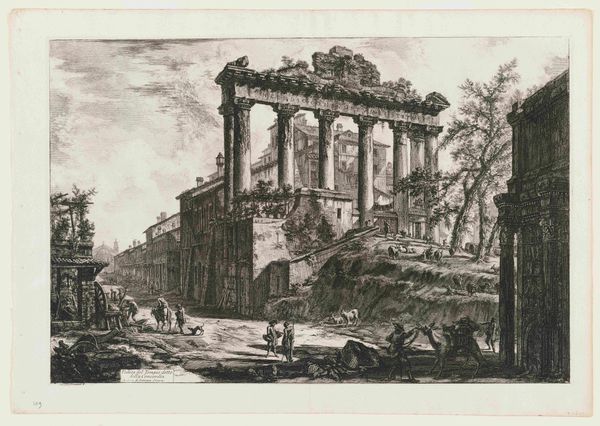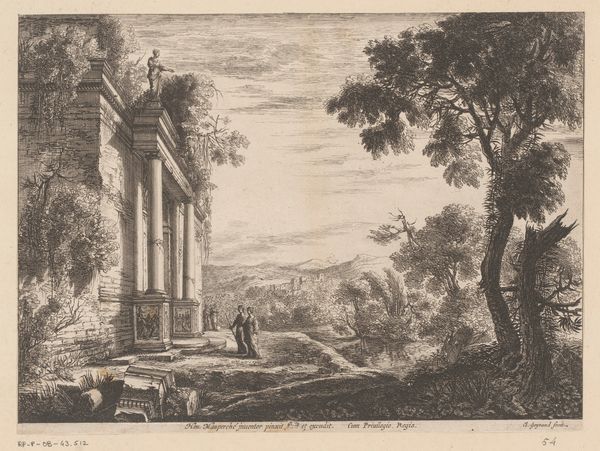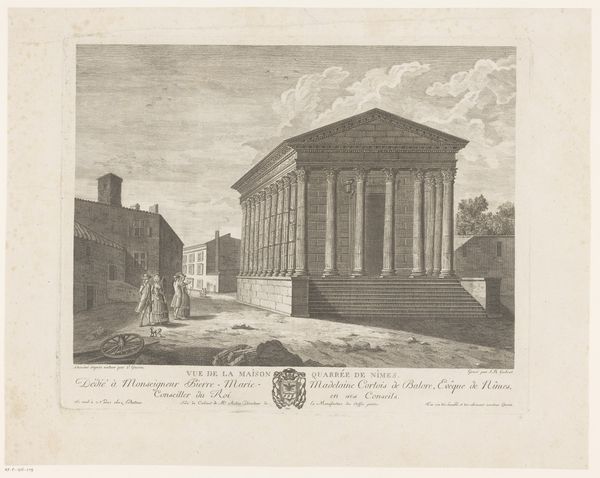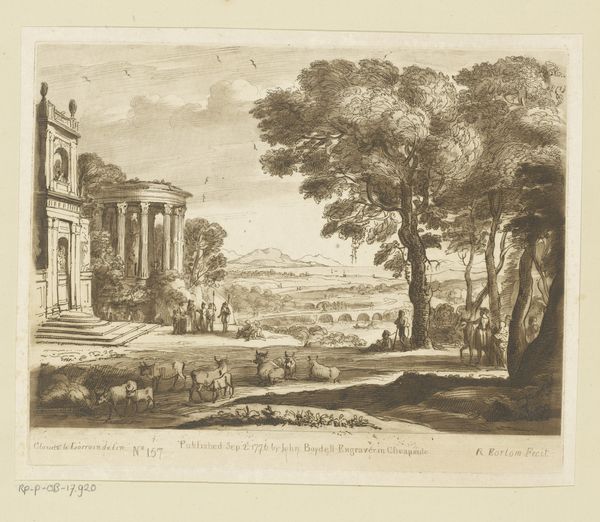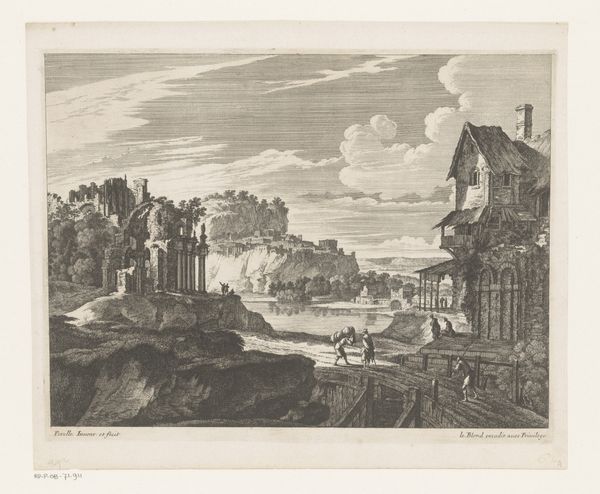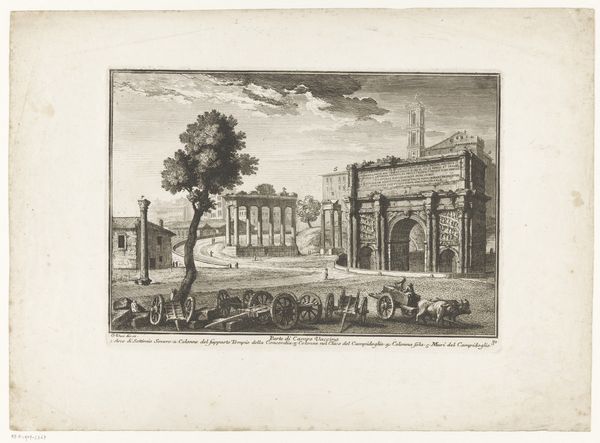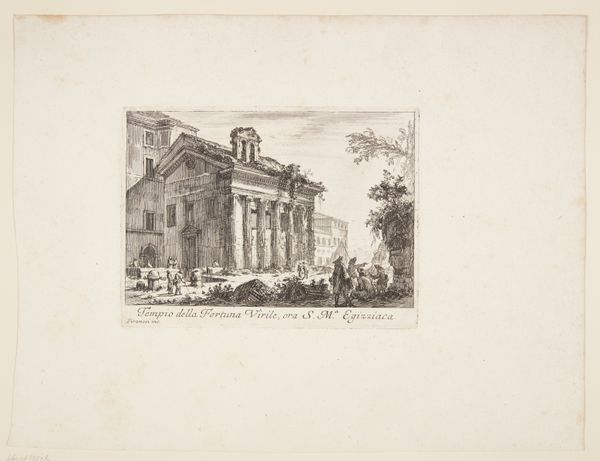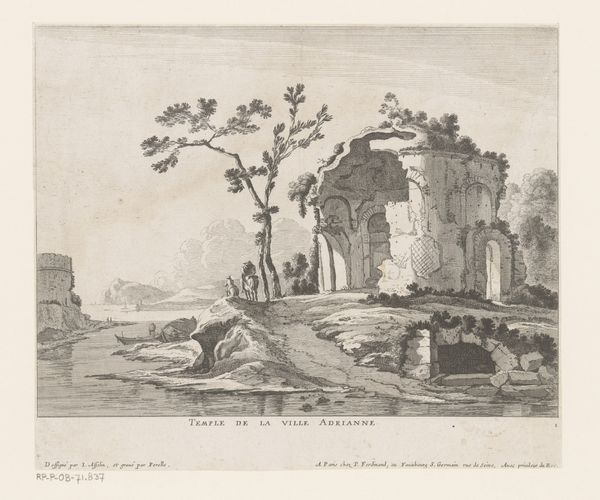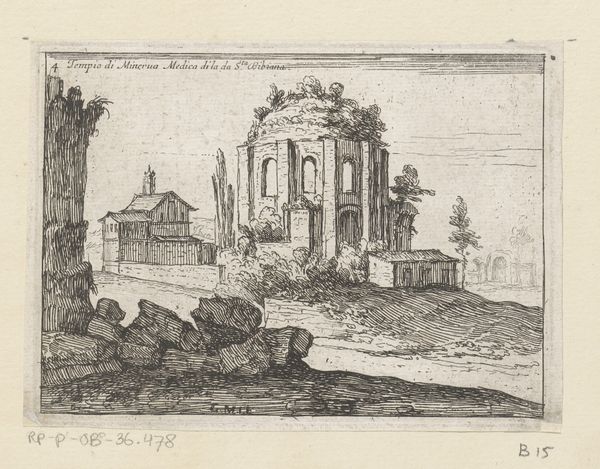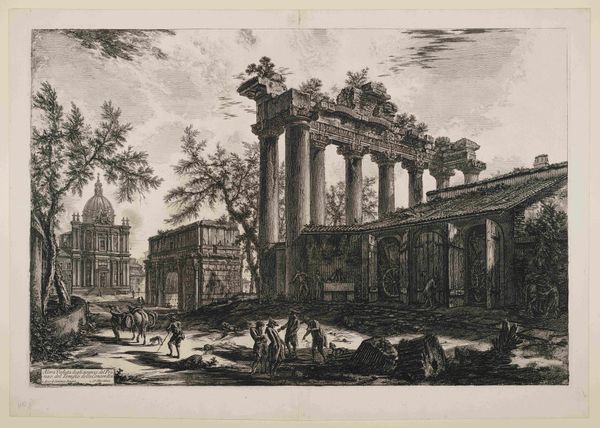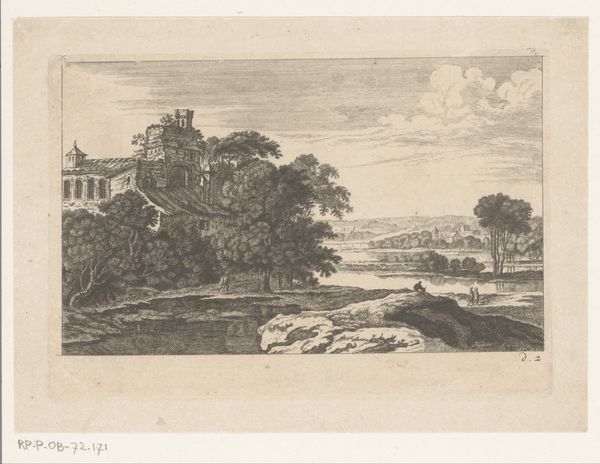
print, etching, engraving, architecture
#
neoclacissism
#
ink paper printed
# print
#
etching
#
old engraving style
#
landscape
#
engraving
#
architecture
Dimensions: height 303 mm, width 465 mm
Copyright: Rijks Museum: Open Domain
Curator: At first glance, there's a quiet grandeur here, like the memory of a dream I once had about ancient stones. The lines have a very soft feel which makes this scene feel strangely intimate, as if it's from a personal sketchbook. Editor: That's an interesting perception. We're looking at Jacques Philippe Le Bas’ "View of the Temple of Augustus, Pula", dating from 1758. It's an engraving, so of course it renders a range of gray tones and detailed strokes. Technically quite intriguing. Curator: Intricate. Definitely intricate! But those deliberate imperfections...see where the light catches the crumbling edges of the temple roof? Or the way those tiny figures sort of melt into the landscape? There is the temple standing, enduring, like it has been through a wild, personal journey of ruin, which has given its appearance an enduring resilience. Editor: Right. Le Bas creates a dynamic interplay between architecture and nature; the very essence of neoclassical landscape. Semiotically, the temple signifies permanence, structure, order—values of the Enlightenment period and neoclassicism more generally—juxtaposed against the organic forms of the natural world around it. This visual tension, this controlled contrast between order and chaos. It creates a potent symbolic space for reflecting on civilization’s impact. Curator: Oh, I love "symbolic space!" It makes me think of a stage set where time is the director. The little play that runs there every day shows everyone is interacting on borrowed glory...and yet it all seems so perfectly ordinary in Le Bas' picture. Like stopping by an important landmark is simply a daily routine. Editor: Precisely. I find this so well illustrated in the formal structure. The classical tripartite composition guides the viewer through layers of foreground activity toward the architectural background. This is mirrored by the precise use of line. Note that the bold lines detailing the stone fade into gentler shading which grants the human figures—these small everyday individuals—equal weight, giving them a sense of participation, like players within something historical. Curator: It sounds like you're painting the stage play metaphor I started from a perspective of knowledge and meaning that you extracted simply from observing its construction! Very helpful. I come away now sensing that ruin and restoration exist always in relation, or they need each other to have any true, vibrant definition. Editor: I think that is a most articulate expression of it. Thank you.
Comments
No comments
Be the first to comment and join the conversation on the ultimate creative platform.
